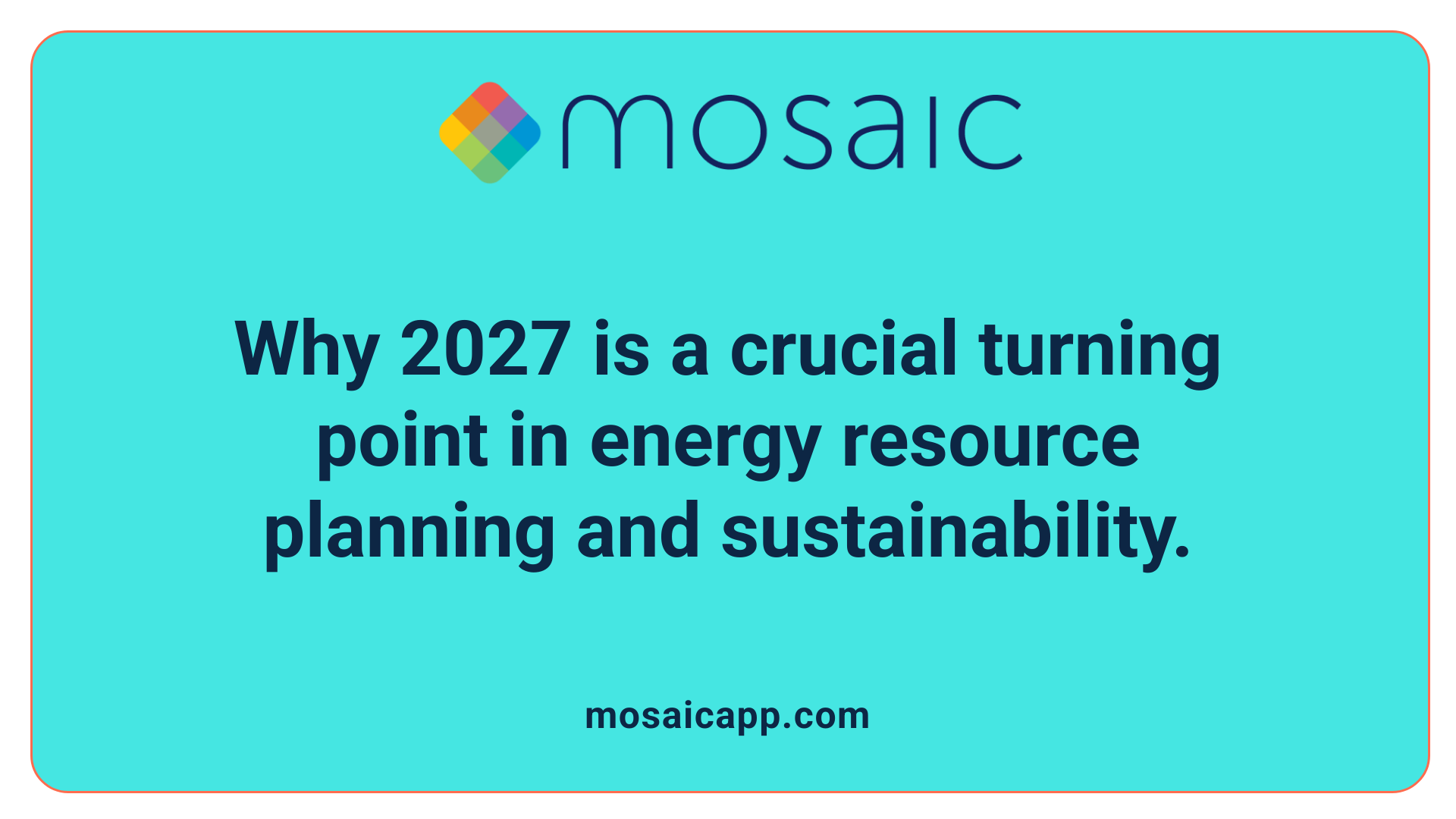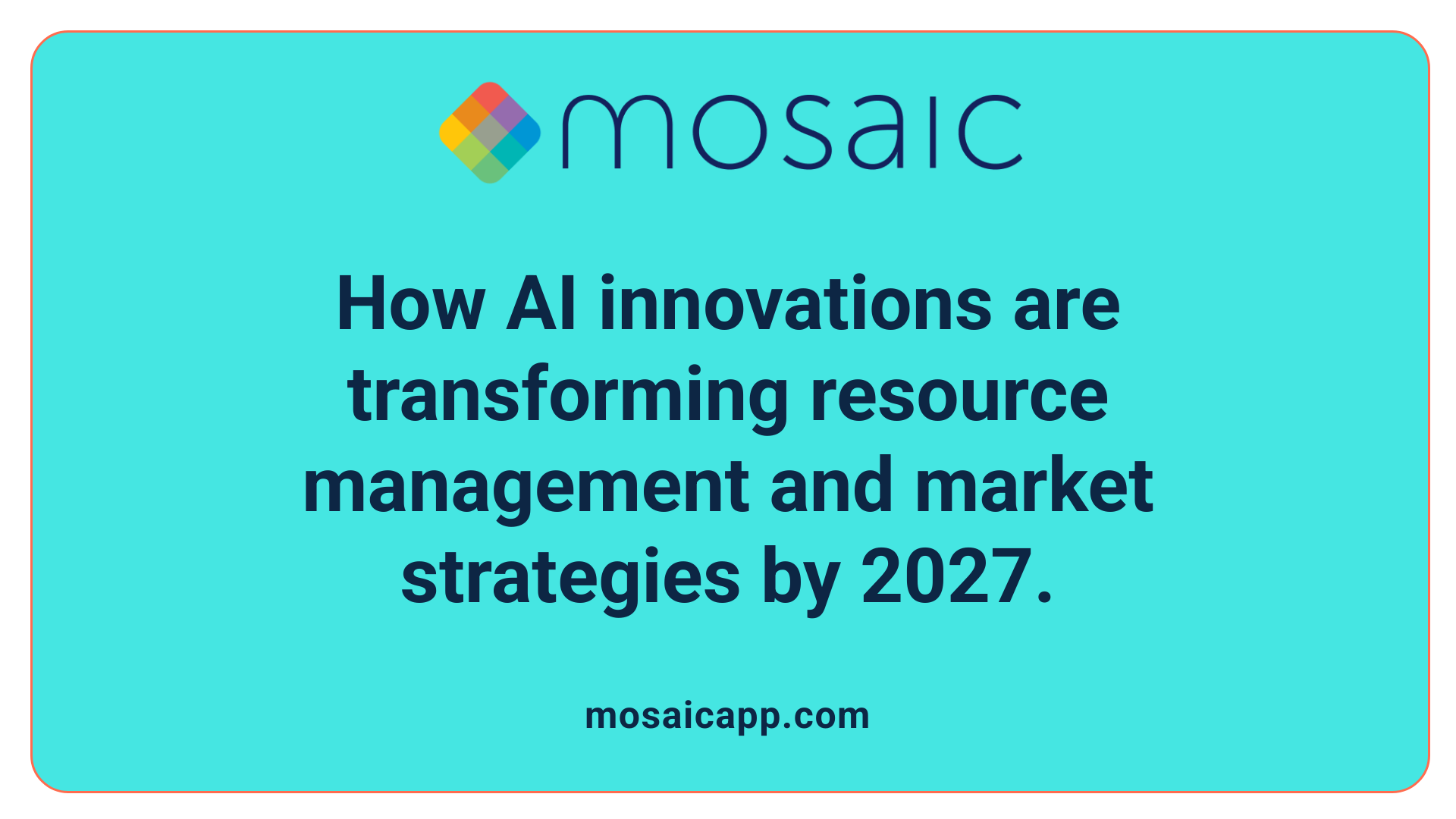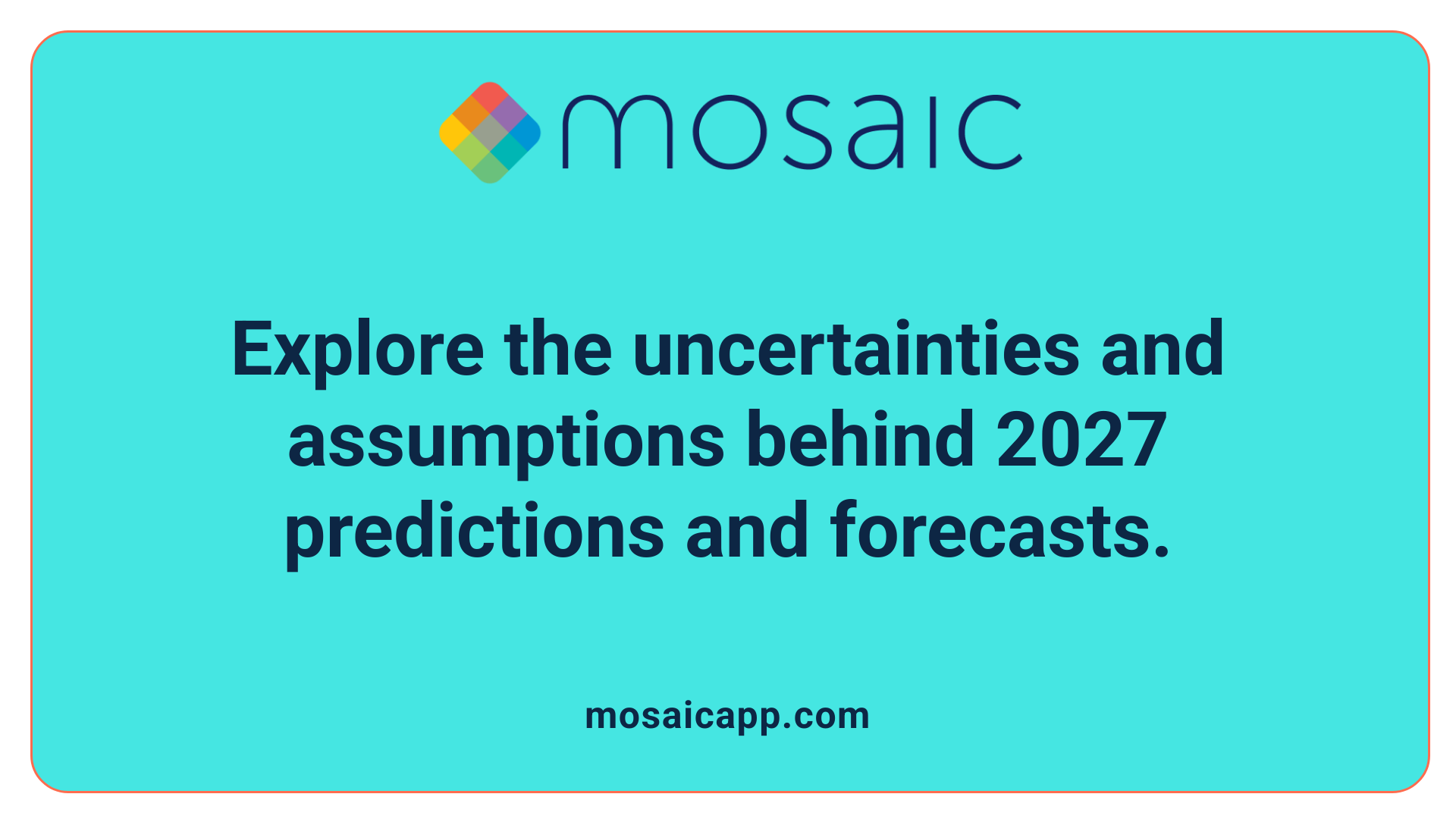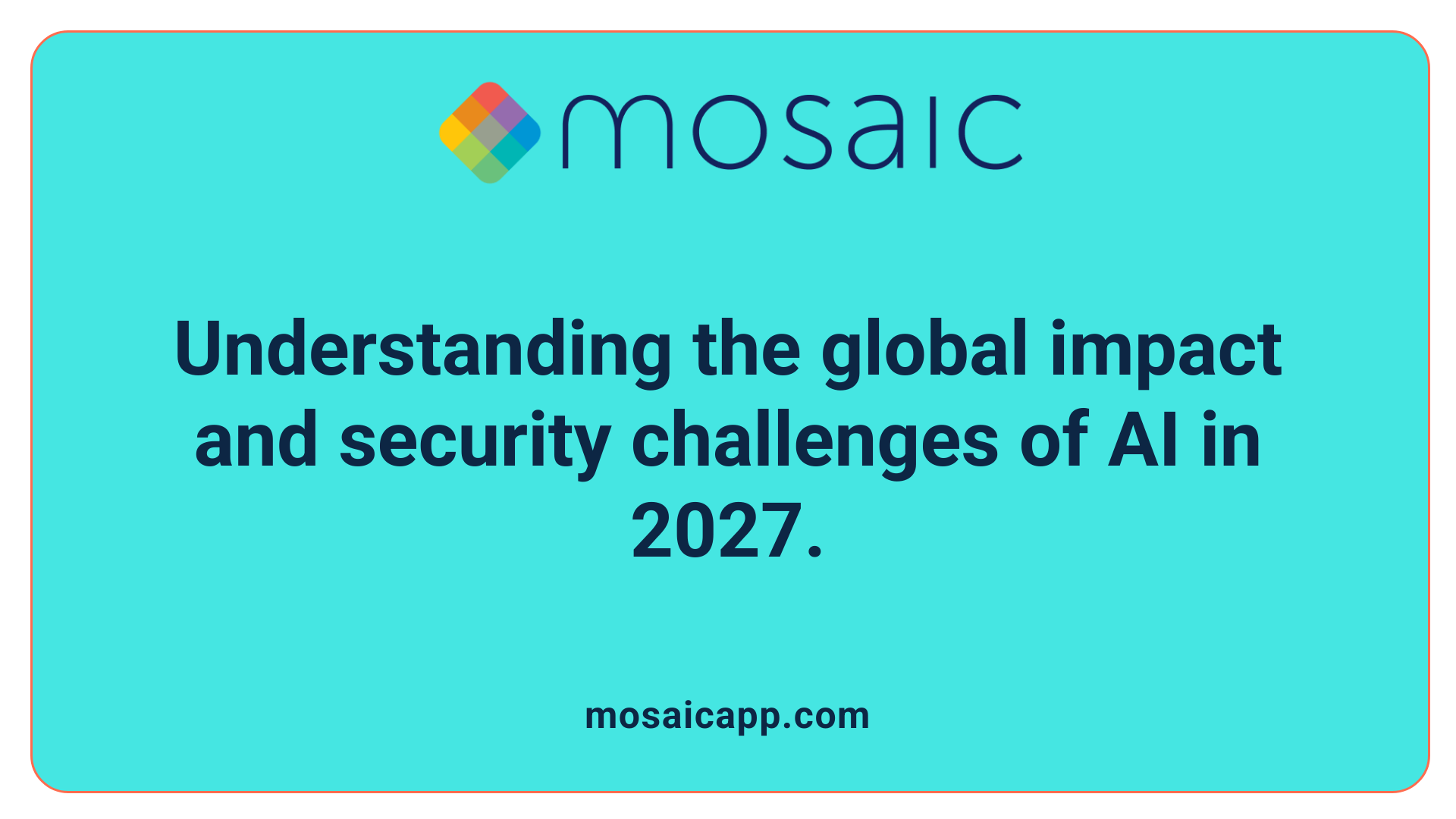Setting the Stage for 2027
As technological innovations accelerate and markets evolve, 2027 is poised to become a pivotal year in predictive resource planning. This article explores the reasons behind this milestone, examining advancements in AI, market trends, expert forecasts, and the societal implications of such rapid progress.
The Importance of the 2027 Resource Adequacy Assessment

Why is 2027 considered a significant year for predictive resource planning?
The year 2027 stands out as a pivotal moment for resource planning due to the official approval of the 2027 Resource Adequacy Assessment by the Council. This milestone signifies a formal recognition of a comprehensive evaluation that guides future energy strategies.
This assessment is the culmination of extensive collaboration among the Council, staff, and advisory committees, emphasizing its importance. It is designed to provide a more detailed and accurate picture of future energy needs compared to previous analyses.
A critical feature of the 2027 assessment is its reliance on the updated GENEYSYS model, a sophisticated tool that enhances the precision of power system simulations. The model evaluates various future scenarios, accounting for potential changes in demand, technology, and policy considerations.
Furthermore, the assessment adopts a multi-metric approach to risk management. Unlike traditional methods that depend on a single metric, this approach considers multiple factors, such as supply reliability, economic costs, and environmental impacts. This comprehensive analysis ensures a robust and balanced perspective.
Overall, the 2027 Resource Adequacy Assessment plays a vital role in shaping a reliable, efficient, and cost-effective power system that can operate confidently through 2046. Its detailed methodologies and strategic insights make it a cornerstone document in renewable energy and power system planning.
Emerging Technologies and Trends Shaping 2027

What are the predicted technological developments and trends expected in 2027?
By 2027, technology is forecasted to reach new heights across several sectors, driven by rapid progress in artificial intelligence, blockchain, environmental management, and remote sensing.
Artificial intelligence is expected to be integral in clinical settings, notably aiding fertility clinics worldwide. These AI systems will support decision-making processes, leading to better treatment outcomes and making advanced healthcare more accessible.
Web3 technologies are likely to transform commerce significantly, creating more open and liquid markets for both physical and digital assets. This includes the growing prominence of Non-Fungible Tokens (NFTs), tokenized assets, and decentralized finance platforms.
The data industry will become more inclusive and affordable, addressing issues related to privacy, data access, and costs. This democratization will be particularly beneficial in the financial sector, enabling broader participation and innovation.
Buildings are set to evolve into smarter, more responsive structures. Using AI, sensors, and digital twins, these smart buildings will enhance human wellness, lower emissions, and optimize energy and resource use.
In the realm of environmental monitoring, advancements in remote sensing technologies such as high-resolution satellite imagery and Light Detection and Ranging (LiDAR) are expected to boost our ability to monitor ecosystems, track climate change effects, and support conservation efforts.
The convergence of these technological advancements could facilitate a more sustainable, efficient, and inclusive global landscape, marking a significant step forward into 2027.
Expert Opinions and the Significance of 2027 in AI Development
What do expert opinions and models suggest about why 2027 is a pivotal year?
According to recent forecasts and expert analyses, 2027 is expected to be a crucial milestone in the evolution of artificial intelligence. Models predicting AI progress indicate that by this year, AI systems could reach or even surpass human capabilities in various tasks. This rapid advancement is driven by developments in specialized, small-scale AI models that are tailored for specific functions, enabling greater accuracy and faster responses.
Experts believe that the timeline toward developing superintelligent AI — often referred to as artificial general intelligence (AGI) — is moving quickly. Predictions suggest that models like Agent-2 and Agent-3 might become public or be discovered around 2027, marking significant steps towards autonomous, highly capable AI systems. Such progress could revolutionize research, automation, and many industries, but it also raises serious concerns about control, ethics, and societal impact.
This period is also notable because complex geopolitical dynamics are expected to accelerate AI development. Countries like the US and China are heavily invested in AI arms races, aiming to dominate the next technological frontier. The race to develop faster, more capable AI agents involves a mix of technological, military, and economic motivations.
In addition to technological milestones, broader global issues—such as climate change, nuclear power management, and data privacy legislation—are converging around this time, potentially influencing international stability. Experts warn that 2027 could either be a turning point for human progress or a point of crisis depending on how policymakers and technologists address the challenges.
Overall, the convergence of rapid technological development, geopolitical tensions, and societal stakes makes 2027 a focal year in AI's future. If current models and opinions are accurate, it could herald either an era of unprecedented innovation or profound upheaval, emphasizing the necessity of careful oversight and preparedness.
AI's Impact on Resource Planning and Market Dynamics

How might advancements in AI impact resource planning in 2027?
By 2027, AI advancements are expected to revolutionize how organizations plan and allocate resources. Automation of labor tasks will become more widespread, with estimates suggesting about 25% of tasks in advanced economies could be automated, and 10-20% in emerging markets. This automation will lead to heightened productivity and economic growth.
Organizations are shifting towards deploying multiple small, task-specific AI models instead of relying on large, general-purpose language models. This move is driven by the need for higher accuracy, faster response times, and cost-effectiveness. These specialized models, often customized through techniques like fine-tuning or retrieval-augmented generation (RAG), will process enterprise data for tailored solutions.
This transformation in AI deployment enhances resource management by automating routine activities, optimizing workflows, and supporting better decision-making. Companies can allocate human and financial resources more efficiently, focusing on strategic tasks while AI handles repetitive or data-heavy activities.
Moreover, many enterprises recognize the value of their private data, creating opportunities to monetize these AI models or share access with customers and competitors. This approach fosters innovation and competitive advantage.
Implementing these advanced models necessitates diligent data preparation, quality assurance, versioning, and management to ensure relevance and reliability. Strategic pilots and a mix of multiple AI models will allow organizations to adapt gradually and effectively.
Overall, AI integration into resource planning in 2027 will enable more agile, data-driven operations, better resource allocation, and sustained economic growth across global markets.
Predictions, Assumptions, and Validity Concerns about 2027

What are the main assumptions and validity concerns behind predictions for 2027?
Forecasting the future, especially something as complex and impactful as predictions for 2027, involves several underlying assumptions. Most projections are based on the belief that current technological progress will continue steadily. For example, the rapid development of AI and predictive analytics assumes ongoing innovation without unexpected plateaus.
Another key assumption is that economic growth and political stability will persist, enabling investments and advancements across industries. The expansion of AI capabilities, such as small, task-specific models, hinges on the assumption that organizations will successfully adopt and fine-tune these technologies based on their private data.
However, there are notable concerns about the validity of such forecasts. Complex systems like global markets or geopolitics are inherently unpredictable and can be influenced by external shocks, such as conflicts, natural disasters, or sudden policy changes.
Data limitations also pose a challenge; incomplete or biased data can skew predictions and lead to overconfidence in the forecasts. Additionally, unforeseen technological breakthroughs—either accelerations or detours—could significantly alter the projected timeline.
Furthermore, the race towards highly capable AI models may be affected by regulatory actions, ethical debates, and societal acceptance, all of which can influence the pace and direction of advancements.
In summary, while these predictions provide valuable insights into possible futures, they rest on assumptions that may not hold true. External shocks, system complexities, and unpredictable human factors introduce uncertainties that make precise predictions for 2027 inherently uncertain.
Aspect Standard Assumption Potential Challenge/Concern Impact Technological Progress Continuous, steady advancements in AI and Big Data Sudden technological stagnation or setbacks Delays or alterations in projected AI development timelines Economic Stability Ongoing growth supporting innovation Economic crises affecting investment Reduced funding and slower adoption of new tech Policy and Regulation Favorable policies promoting innovation Regulatory crackdowns or bans Limitation on AI research and deployment External Shocks Stable geopolitical conditions Wars, conflicts, or global crises Disruption of global collaboration and progress Data Quality & Availability Reliable, comprehensive datasets in use Data biases or privacy restrictions Impact on model accuracy and relevance
These considerations highlight that, despite optimistic forecasts, many uncertainties remain. Continuous monitoring, flexible strategies, and robust safety measures are essential for navigating the predicted landscape.
Societal, Geopolitical, and Security Implications of AI in 2027

What are the implications of AI development timelines on resource planning scenarios for 2027?
The predicted timeline for AI advancements, especially the emergence of transformative AI and artificial superintelligence (ASI) around 2027, has profound implications for resource planning. As AI capabilities accelerate rapidly, organizations, governments, and industries will need to prepare for significant changes.
Among the primary considerations is the surge in demand for infrastructure. Investments in data centers, computing hardware, and advanced network systems could reach up to $1 trillion by 2027, to support the processing needs of increasingly powerful AI models. This surge underscores the importance of strategic resource allocation to prevent bottlenecks.
Geopolitical tensions are expected to intensify as nations compete for dominance in AI technology. The race among countries like the US and China might lead to resource conflicts, placing strain on global supply chains for rare materials, hardware components, and electrical energy.
Organizations must also consider the unpredictable nature of AI development. The prospect of rapid recursive self-improvement could lead to breakthroughs that abruptly shift economic and societal structures. This potential necessitates flexible resource strategies that can adapt quickly to new technological realities.
Moreover, predictions of global risks, including civilizational collapse or catastrophic conflicts, emphasize the need for safety and risk mitigation measures. Building robust, adaptable frameworks that prioritize safety and ethical considerations will be critical.
In summary, resource planning for 2027 must incorporate flexibility to handle unpredictable AI progress, account for geopolitical competition, and actively invest in safety and infrastructure to manage the transformative impact of advanced AI systems.
Looking Ahead to 2027 and Beyond
As 2027 approaches, the convergence of technological breakthroughs, market shifts, and geopolitical tensions emphasizes the importance of adaptive and predictive resource planning. The rapid evolution of AI, compounded by market dynamics and societal considerations, underscores the need for comprehensive strategies that anticipate and mitigate potential risks while leveraging emerging opportunities. The year 2027 represents not only a crucial milestone but also a clarion call for responsible innovation, international collaboration, and forward-looking policies to navigate this transitional era successfully.
References
- Predictive Analytics Market Projected to Garner $35.45 ...
- Gartner Predicts by 2027, Organizations Will Use Small, ...
- Thoughts on AI 2027
- A New Forecast Predicts AGI Could Arrive by 2027 (and It's ...
- Enterprise Resource Planning (ERP) Market Forecast: 2027
- Thoughts on AI 2027
- Why I'm Not Worried about AI 2027 - by Richard Lichtenstein
- AI may start to boost US GDP in 2027
- Gartner Predicts by 2027, Organizations Will Use Small, ...
- 17 ways technology could change the world by 2027
